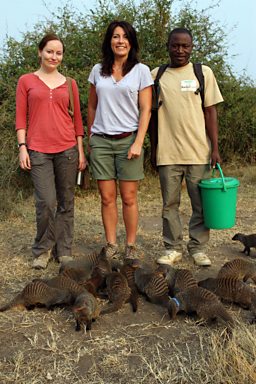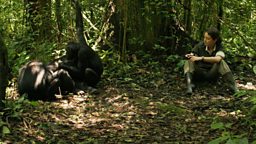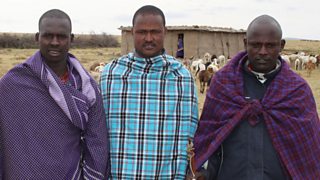Meet the experts from episode 1
In Talk to the Animals, zoologist Lucy Cooke will be travelling the world to meet the experts who are pioneering ways to communicate with all sorts of animals, from tiny jumping spiders to massive hippos. Here's who Lucy will be meeting in episode 1...
Banded mongooses with Dr Emma Vitikainen
Emma is a Research Fellow at the University of Exeter, she’s part of the longest running research project into banded mongooses anywhere in the world. Emma is interested in how and why social species cooperate with each other.
Emma says of the mongooses; “They do everything as a group; they even all give birth on the same day and raise their young together, with males as well as females looking after the young ones."
Hippos with Professor Bill Barklow
Bill is a Professor Emeritus of Framingham State University. During a holiday in Africa, he noticed that hippos were seemingly communicating with each other along the river; when one hippo called, distant hippos would surface and bellow back, leading Bill to wonder whether they had heard the sound under the water. Bill’s theory that hippos do communicate above and below water at the same time and his subsequent work has seen him become one of the world’s leading experts in ‘amphibious communication’.
Fireflies with Dr Christopher Cratsley & Dr Andy Moiseff
Christopher, who is Director of Assessment at Fitchburg State University, has been studying fireflies since 2001. He discovered that the length of the male firefly’s flash is a good predictor of his suitability as a mate for the female firefly. Fellow expert Andy, Professor and Associate Dean for Life Sciences at the University of Connecticut, is more interested in the importance of the synchronicity of flashes to mating fireflies.
Chimpanzees with Dr Catherine Hobaiter
For her Ph.D. Catherine conducted the first systematic study of how wild apes use gestures to communicate. She is now a lecturer at the School of Psychology & Neuroscience at the University of St Andrews, and continues to investigate the evolution of communication and social behaviour through long-term field studies of wild chimpanzees. Consequently Catherine is often based in the Budongo Rainforest in Uganda.
Red deer with Dr David Reby
David focuses on investigating the origin and function of vocal signals in animals and humans. He studies a range of species including deer, owls, herring gulls and domestic dogs. David has shown that male deer have a descended larynx, which allows them to change the quality of their vocalisations to attract female deer. This anatomical innovation was traditionally thought to be a uniquely human trait. His findings have large implications in relation to the evolution of our own speech and have cast doubt on previously held theories.
Túngara frogs with Dr Ryan Taylor & Dr Barrett Klein
Ryan, Associate Professor at the Department of Biological Sciences at Salisbury University, and Barrett, Assistant Professor at the University of Wisconsin-La Crosse, have pioneered the use of robotic frogs to gain insights into how they communicate when mating. The scientists introduce fake male frogs to real females allowing them to assess what factors are most attractive when female frogs select a mate.
Jumping spiders with Professor Damian Elias
Damian is the principle investigator at his Lab at the University of California; he is a world leader in the study of ‘seismic communication’ in jumping spiders. Until recently, very little was known about the use of vibration as a mode of communication for small invertebrates, but Damian’s team have used cutting-edge sound technology to uncover the true complexity of their world.



Find out more
-
![]()
Find out who'll be talking with the animals in episode 1
-
![]()
Lucy reveals which animals she loved chatting to


